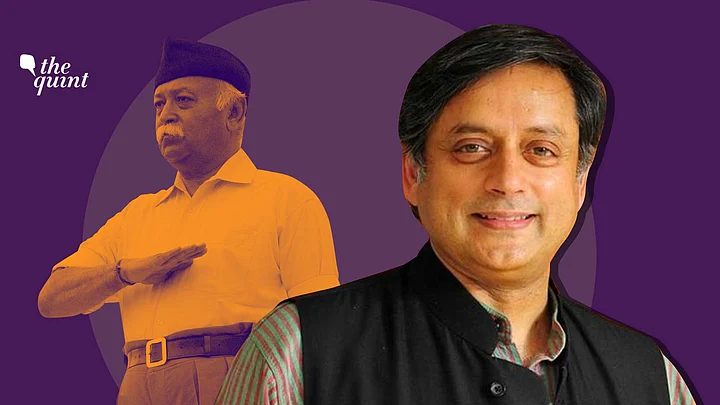Years ago I had walked into the manual scavengers’ colony at Dadar in Mumbai, and for the first time discovered that there is a Mahatma Gandhi that is not a road name, not a face on currency notes, not a statue or a line drawing, and most certainly not a universal metaphor for all that is virtuous.
For the first time I discovered that there is a Gandhi that others see, and not as a human beyond the Mahatma angle, but as a seriously flawed person. The obeisance industry refuses to even consider the viewpoints of Dalits, feminists and anti-communalists. From politicians to the leftist ‘azaadi from poverty’ ring leader Kanhaiya Kumar, they quote the Mahatma when they wish to speak out against Hindutva.
Fact is, Gandhi was the Lord Ram and the Chanakya of his time. The rejecter of a throne manoeuvring the game of thrones.
Did Gandhi Uphold ‘Soft Hindutva’?
In Why I Killed The Mahatma, Nathuram Godse writes, “Before I fired the shots I actually wished him well and bowed to him in reverence.”
Why did he choose to assassinate Gandhi? Although it is recounted that an earlier attempt of his to kill Gandhi was unsuccessful because he was afraid that the bystanders would get hurt, it is more likely that back then, when Hindutva was not mainstream, he needed a big target to be hailed as a hero.
As an atheist who was communal, he did not notice that Gandhi was, in fact, a flagbearer of the ‘soft Hindutva’ that we accuse secular parties of today. His prism was Ram Rajya and certainly majoritarian.
Gandhi’s alignment with the Khilafat movement was politically expedient, and the legacy of ‘catering’ to Muslims, and for Muslims to be ‘used’, continues. His ‘secular nationalism’ invoked dharma, and his public gatherings were prayer meetings held in an ashram.
His political ideology was an expression of the dharmik self, be it abjuring wealth or his moments of ‘sacrifice’ and helplessness, that find echoes in Advani’s ‘sadness’ after the Babri demolition and Sonia Gandhi’s ‘vedna’ as the reason for not accepting the prime minister’s post.
Gandhi’s ‘Experiments With Truth’
Gandhi had mastered the idea of projecting personal whims as a moral position. His experiments with truth were self-serving. Particularly galling was the experiment to sleep with young women to strengthen his resolve to remain celibate. Did he even imagine the psychological impact it would have on them? The diaries of his grand-niece Manuben reveal a tortured soul.
He did not consult his wife about his plans to become celibate, and informed her only after he took the vow. He explained it later as: “From that day when I began brahmacharya, our freedom began. My wife became a free woman, free from my authority as her lord and master and I became free from my slavery to my own appetite which she had to satisfy.”
Moreover, Gandhi’s experiments with toilet cleaning only made it clear that this was a ‘lowly job’ and he was taking it up to ‘dignify’ it.
It was the magnanimity of the high-born. The term ‘Harijan’ (god’s children), was a pigeonhole. As one man in the scavengers’ colony said, “Everyone goes on about Bapu, Bapu, wearing Gandhi caps. They say, wear khadi. Do you know how expensive khadi is?” As Sarojini Naidu once said, “it is very expensive to keep Bapu in poverty.”
Prejudice ‘Masquerading’ As Humility
Gandhi’s studied humility camouflaged prejudices. On his prison experience in 1908 in South Africa, Gandhi had said, “We were marched off to a prison intended for Kaffirs… our garments were stamped with the letter “N”, which meant that we were being classed with the Natives. We were all prepared for hardships, but not quite for this experience. We could understand not being classed with the whites, but to be placed on the same level with the Natives seemed too much to put up with.”
The Sikh Federation of UK had opposed the building of a Gandhi statue on Parliament Square in London, calling him “a blatant racist, a sexual weirdo or worse a child abuser and someone discriminating on the basis of the Hindu caste system, which is now outlawed in the UK”.
Students, professors and locals ensured that a Gandhi statue had no place in the University of Ghana. In their petition, they stated that it “…undermines our struggles for autonomy, recognition and respect. How will the historian teach and explain that Gandhi was uncharitable in his attitude toward the Black race and see that we’re glorifying him?”
In India, we don’t have a culture of inquiry. Be it Modi, Rahul Gandhi, Anna Hazare, or even Yasin Malik — all claim to have respect for the Mahatma. They may be accused of politicking, but it could also mean that the Gandhian ideology is all things to all people and not the fulcrum we thought it was.
(Farzana Versey is a Mumbai-based writer. She tweets at @farzana_versey. This is an opinion piece and the views expressed are the author’s own. The Quint neither endorses nor is responsible for them.)
(At The Quint, we question everything. Play an active role in shaping our journalism by becoming a member today.)



